 | –≠–ª–µ–∫—Ç—Ä–æ–Ω–Ω—ã–π –∫–æ–º–ø–æ–Ω–µ–Ω—Ç: MOC3021 | –°–∫–∞—á–∞—Ç—å:  PDF PDF  ZIP ZIP |
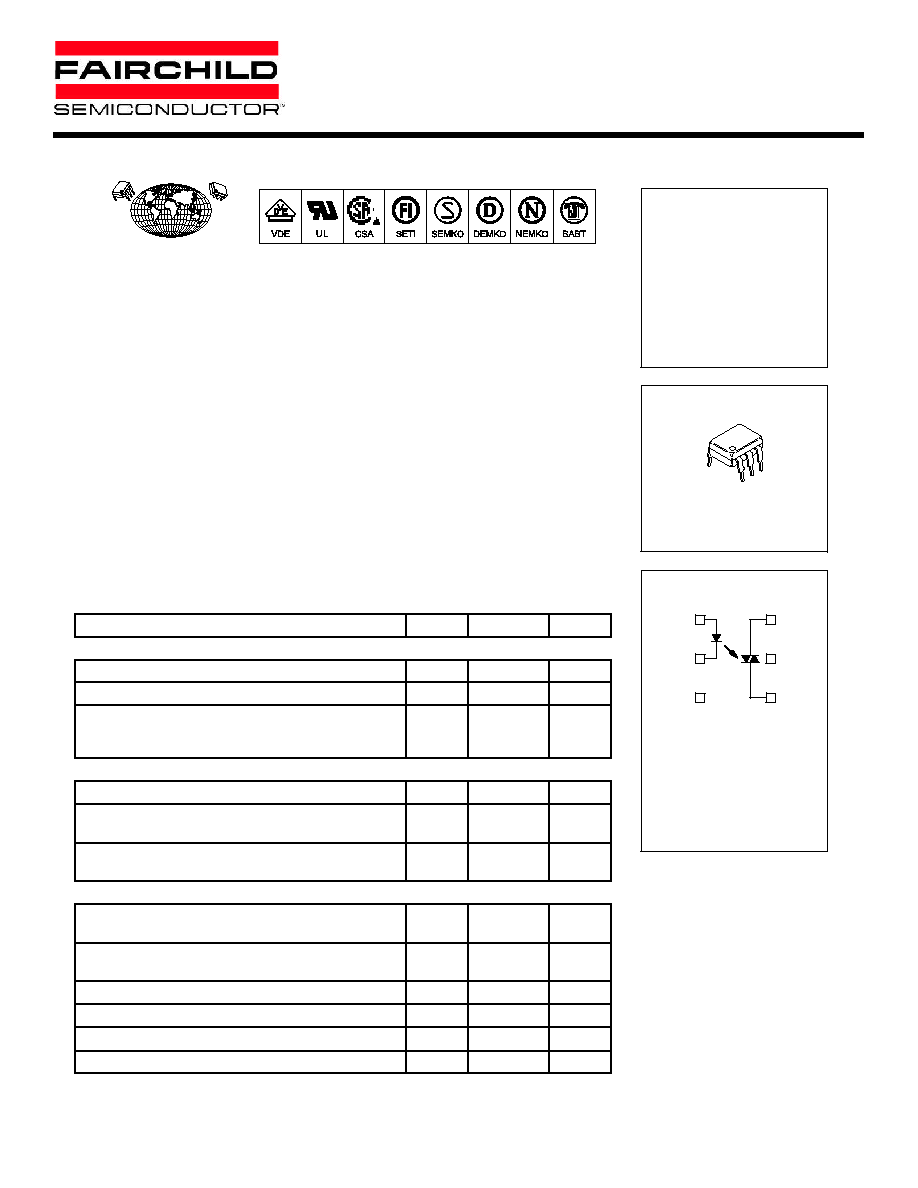
1
6-Pin DIP Random-Phase
Optoisolators Triac Driver Output
(400 Volts Peak)
The MOC3020 Series consists of gallium arsenide infrared emitting diodes,
optically coupled to a silicon bilateral switch.
∑
To order devices that are tested and marked per VDE 0884 requirements, the
suffix "V" must be included at end of part number. VDE 0884 is a test option.
They are designed for applications requiring isolated triac triggering.
Recommended for 115/240 Vac(rms) Applications:
∑
Solenoid/Valve Controls
∑
Static ac Power Switch
∑
Lamp Ballasts
∑
Solid State Relays
∑
Interfacing Microprocessors to 115 Vac Peripherals
∑
Incandescent Lamp Dimmers
∑
Motor Controls
MAXIMUM RATINGS
(TA = 25
∞
C unless otherwise noted)
Rating
Symbol
Value
Unit
INFRARED EMITTING DIODE
Reverse Voltage
VR
3
Volts
Forward Current -- Continuous
IF
60
mA
Total Power Dissipation @ TA = 25
∞
C
Negligible Power in Triac Driver
Derate above 25
∞
C
PD
100
1.33
mW
mW/
∞
C
OUTPUT DRIVER
Off≠State Output Terminal Voltage
VDRM
400
Volts
Peak Repetitive Surge Current
(PW = 1 ms, 120 pps)
ITSM
1
A
Total Power Dissipation @ TA = 25
∞
C
Derate above 25
∞
C
PD
300
4
mW
mW/
∞
C
TOTAL DEVICE
Isolation Surge Voltage(1)
(Peak ac Voltage, 60 Hz, 1 Second Duration)
VISO
7500
Vac(pk)
Total Power Dissipation @ TA = 25
∞
C
Derate above 25
∞
C
PD
330
4.4
mW
mW/
∞
C
Junction Temperature Range
TJ
≠ 40 to +100
∞
C
Ambient Operating Temperature Range
TA
≠ 40 to +85
∞
C
Storage Temperature Range
Tstg
≠ 40 to +150
∞
C
Soldering Temperature (10 s)
TL
260
∞
C
1. Isolation surge voltage, VISO, is an internal device dielectric breakdown rating.
1.
For this test, Pins 1 and 2 are common, and Pins 4, 5 and 6 are common.
GlobalOptoisolator
TM
MOC3021
MOC3022
MOC3023
SCHEMATIC
STANDARD THRU HOLE
1. ANODE
2. CATHODE
3. NC
4. MAIN TERMINAL
5. SUBSTRATE
5.
DO NOT CONNECT
6. MAIN TERMINAL
1
2
3
6
5
4
6
1
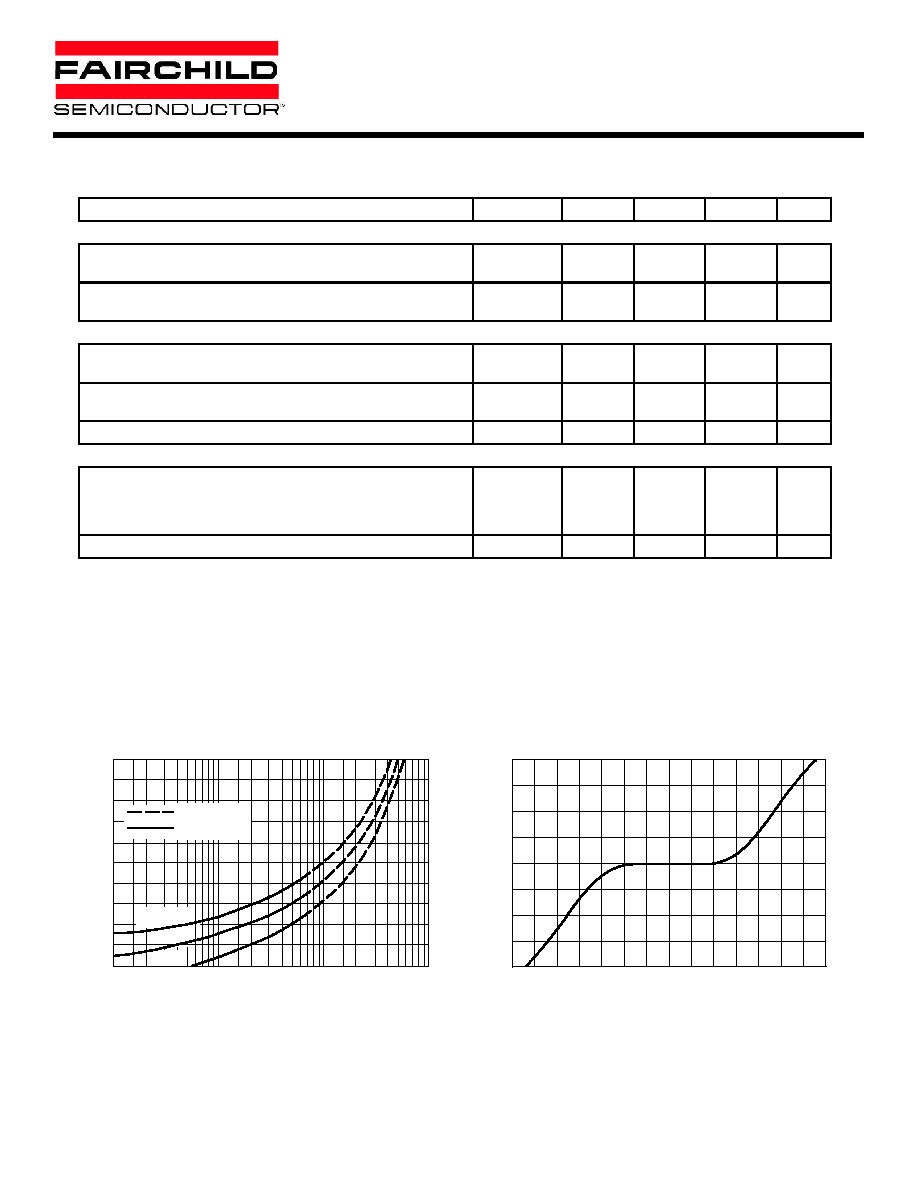
ELECTRICAL CHARACTERISTICS
(TA = 25
∞
C unless otherwise noted)
Characteristic
Symbol
Min
Typ
Max
Unit
INPUT LED
Reverse Leakage Current
(VR = 3 V)
IR
--
0.05
100
µ
A
Forward Voltage
(IF = 10 mA)
VF
--
1.15
1.5
Volts
OUTPUT DETECTOR (IF = 0 unless otherwise noted)
Peak Blocking Current, Either Direction
(Rated VDRM(1))
IDRM
--
10
100
nA
Peak On≠State Voltage, Either Direction
(ITM = 100 mA Peak)
VTM
--
1.8
3
Volts
Critical Rate of Rise of Off≠State Voltage (Figure 7, Note 2)
dv/dt
--
10
--
V/
µ
s
COUPLED
LED Trigger Current, Current Required to Latch Output
(Main Terminal Voltage = 3 V(3))
MOC3021
MOC3022
MOC3023
IFT
--
--
--
8
--
--
15
10
5
mA
Holding Current, Either Direction
IH
--
100
--
µ
A
1. Test voltage must be applied within dv/dt rating.
2. This is static dv/dt. See Figure 7 for test circuit. Commutating dv/dt is a function of the load≠driving thyristor(s) only.
3. All devices are guaranteed to trigger at an IF value less than or equal to max IFT. Therefore, recommended operating IF lies between max
3.
IFT (15 mA for MOC3021, 10 mA for MOC3022, 5 mA for MOC3023) and absolute max IF (60 mA).
≠800
TYPICAL ELECTRICAL CHARACTERISTICS
TA = 25
∞
C
Figure 1. LED Forward Voltage versus Forward Current
2
1.8
1.6
1.4
1.2
1
1
10
100
1000
IF, LED FORWARD CURRENT (mA)
V
F
, FOR
W
ARD VOL
T
AGE (VOL
TS)
85
∞
C
25
∞
C
Figure 2. On≠State Characteristics
≠3
VTM, ON≠STATE VOLTAGE (VOLTS)
I
≠400
0
+400
+800
≠2
≠1
0
1
2
3
TM
, ON-ST
A
TE CURRENT
(mA)
TA = ≠40
∞
C
PULSE ONLY
PULSE OR DC
MOC3021, MOC3022, MOC3023
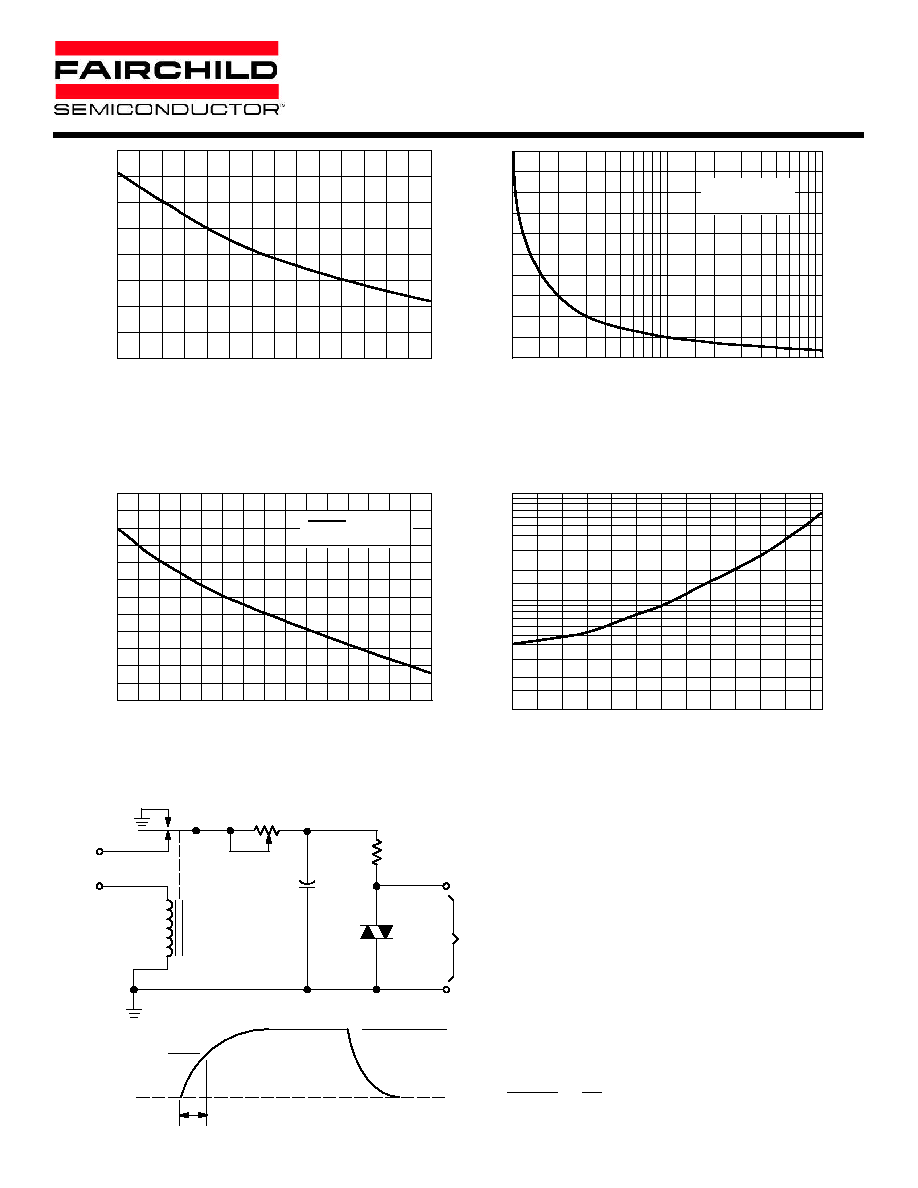
TA, AMBIENT TEMPERATURE (
∞
C)
≠ 40
100
1
≠ 30 ≠ 20 ≠10
0
10
20
30
40
50
60
70
80
10
I DRM
, LEAKAGE CURRENT
(nA)
0.7
Figure 3. Trigger Current versus Temperature
≠40
TA, AMBIENT TEMPERATURE (
∞
C)
0.8
1.1
1.3
1.4
≠20
0
20
40
60
80
FTI
0.6
100
5
1
PWin, LED TRIGGER WIDTH (
µ
s)
10
15
20
25
2
5
20
10
50
0
100
FTI
, NORMALIZED LED
TRIGGER CURRENT
NORMALIZED TO:
PWin
q
100
µ
s
Figure 4. LED Current Required to Trigger
versus LED Pulse Width
2
40
TA, AMBIENT TEMPERATURE (
∞
C)
4
6
8
10
25 30
50
70
60
80
0
100
90
12
STATIC dv/dt
CIRCUIT IN FIGURE 7
Figure 5. dv/dt versus Temperature
+400
Vdc
PULSE
INPUT
MERCURY
WETTED
RELAY
RTEST
CTEST
R = 10 k
X100
SCOPE
PROBE
D.U.T.
APPLIED VOLTAGE
WAVEFORM
252 V
0 VOLTS
t
RC
Vmax = 400 V
dv dt
+
0.63 Vmax
t
RC
+
252
t
RC
1. The mercury wetted relay provides a high speed repeated
pulse to the D.U.T.
2. 100x scope probes are used, to allow high speeds and
voltages.
3. The worst≠case condition for static dv/dt is established by
triggering the D.U.T. with a normal LED input current, then
removing the current. The variable RTEST allows the dv/dt to be
gradually increased until the D.U.T. continues to trigger in
response to the applied voltage pulse, even after the LED
current has been removed. The dv/dt is then decreased until
the D.U.T. stops triggering.
t
RC is measured at this point and
recorded.
,
TRIGGER CURRENT
≠ NORMALIZED
0.9
1
1.2
µ
dv/dt, ST
A
TIC (V/
s)
Figure 6. Leakage Current, IDRM
versus Temperature
Figure 7. Static dv/dt Test Circuit
MOC3021, MOC3022, MOC3023
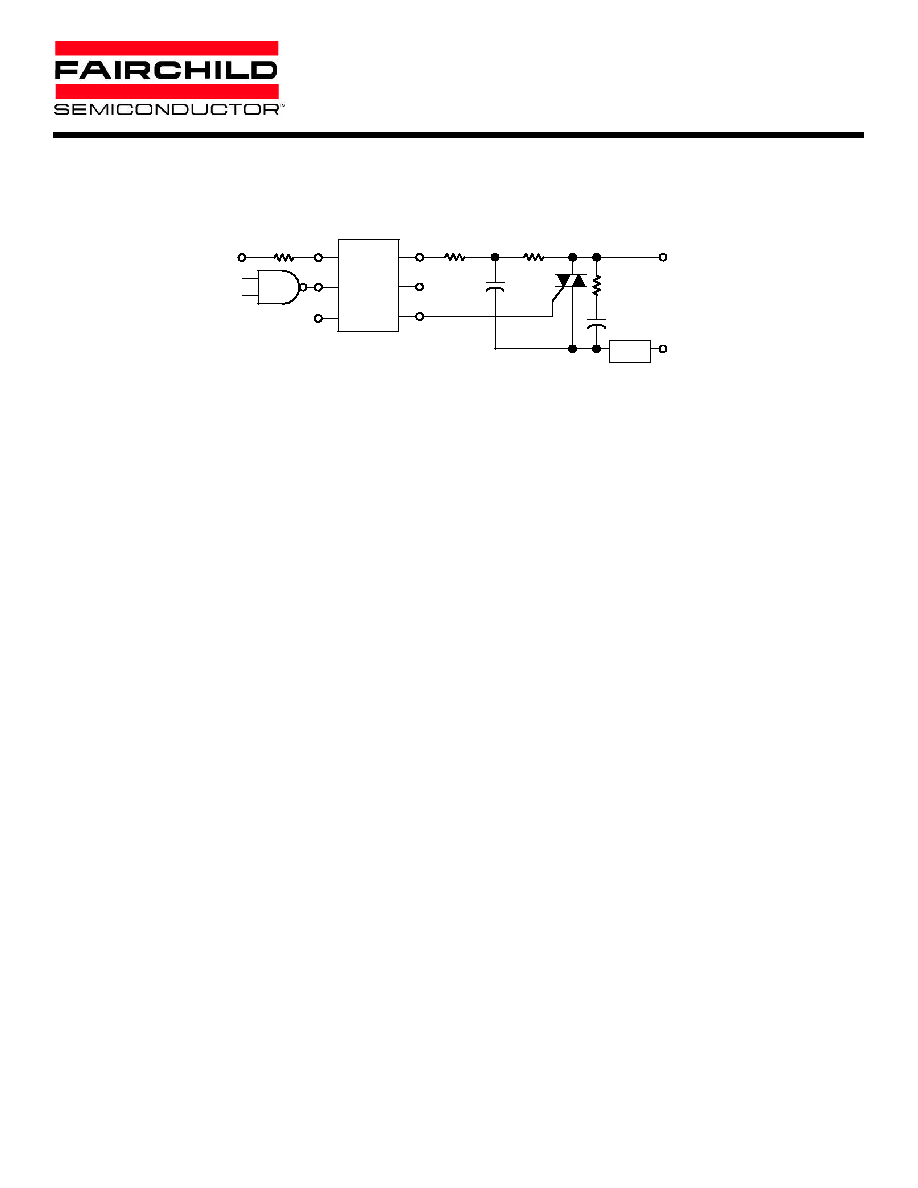
Rin
1
2
6
4
360
MOC
3021/
3022/
3023
470
0.05
µ
F
Figure 8. Typical Application Circuit
3
5
0.01
µ
F
39
HOT
240
VAC
GROUND
LOAD
VCC
* This optoisolator should not be used to drive a load directly. It is in-
tended to be a trigger device only.
In this circuit the "hot" side of the line is switched and the
load connected to the cold or ground side.
The 39 ohm resistor and 0.01
µ
F capacitor are for snub-
bing of the triac, and the 470 ohm resistor and 0.05
µ
F ca-
pacitor are for snubbing the coupler. These components
may or may not be necessary depending upon the particu-
lar triac and load used.
Additional information on the use of optically coupled triac
drivers is available in Application Note AN≠780A.
MOC3021, MOC3022, MOC3023

PACKAGE DIMENSIONS
THRU HOLE
NOTES:
1. DIMENSIONING AND TOLERANCING PER ANSI
Y14.5M, 1982.
2. CONTROLLING DIMENSION: INCH.
3. DIMENSION L TO CENTER OF LEAD WHEN
FORMED PARALLEL.
6
4
1
3
≠A≠
≠B≠
SEATING
PLANE
≠T≠
4 PL
F
K
C
N
G
6 PL
D
6 PL
E
M
A
M
0.13 (0.005)
B
M
T
L
M
6 PL
J
M
B
M
0.13 (0.005)
A
M
T
DIM
MIN
MAX
MIN
MAX
MILLIMETERS
INCHES
A
0.320
0.350
8.13
8.89
B
0.240
0.260
6.10
6.60
C
0.115
0.200
2.93
5.08
D
0.016
0.020
0.41
0.50
E
0.040
0.070
1.02
1.77
F
0.010
0.014
0.25
0.36
G
0.100 BSC
2.54 BSC
J
0.008
0.012
0.21
0.30
K
0.100
0.150
2.54
3.81
L
0.300 BSC
7.62 BSC
M
0
15
0
15
N
0.015
0.100
0.38
2.54
_
_
_
_
STYLE 6:
PIN 1. ANODE
2. CATHODE
3. NC
4. MAIN TERMINAL
5. SUBSTRATE
6. MAIN TERMINAL
SURFACE MOUNT
≠A≠
≠B≠
S
SEATING
PLANE
≠T≠
J
K
L
6 PL
M
B
M
0.13 (0.005)
A
M
T
C
D
6 PL
M
A
M
0.13 (0.005)
B
M
T
H
G
E
6 PL
F
4 PL
3
1
4
6
NOTES:
1. DIMENSIONING AND TOLERANCING PER ANSI
Y14.5M, 1982.
2. CONTROLLING DIMENSION: INCH.
DIM
MIN
MAX
MIN
MAX
MILLIMETERS
INCHES
A
0.320
0.350
8.13
8.89
B
0.240
0.260
6.10
6.60
C
0.115
0.200
2.93
5.08
D
0.016
0.020
0.41
0.50
E
0.040
0.070
1.02
1.77
F
0.010
0.014
0.25
0.36
G
0.100 BSC
2.54 BSC
H
0.020
0.025
0.51
0.63
J
0.008
0.012
0.20
0.30
K
0.006
0.035
0.16
0.88
L
0.320 BSC
8.13 BSC
S
0.332
0.390
8.43
9.90
MOC3021, MOC3022, MOC3023
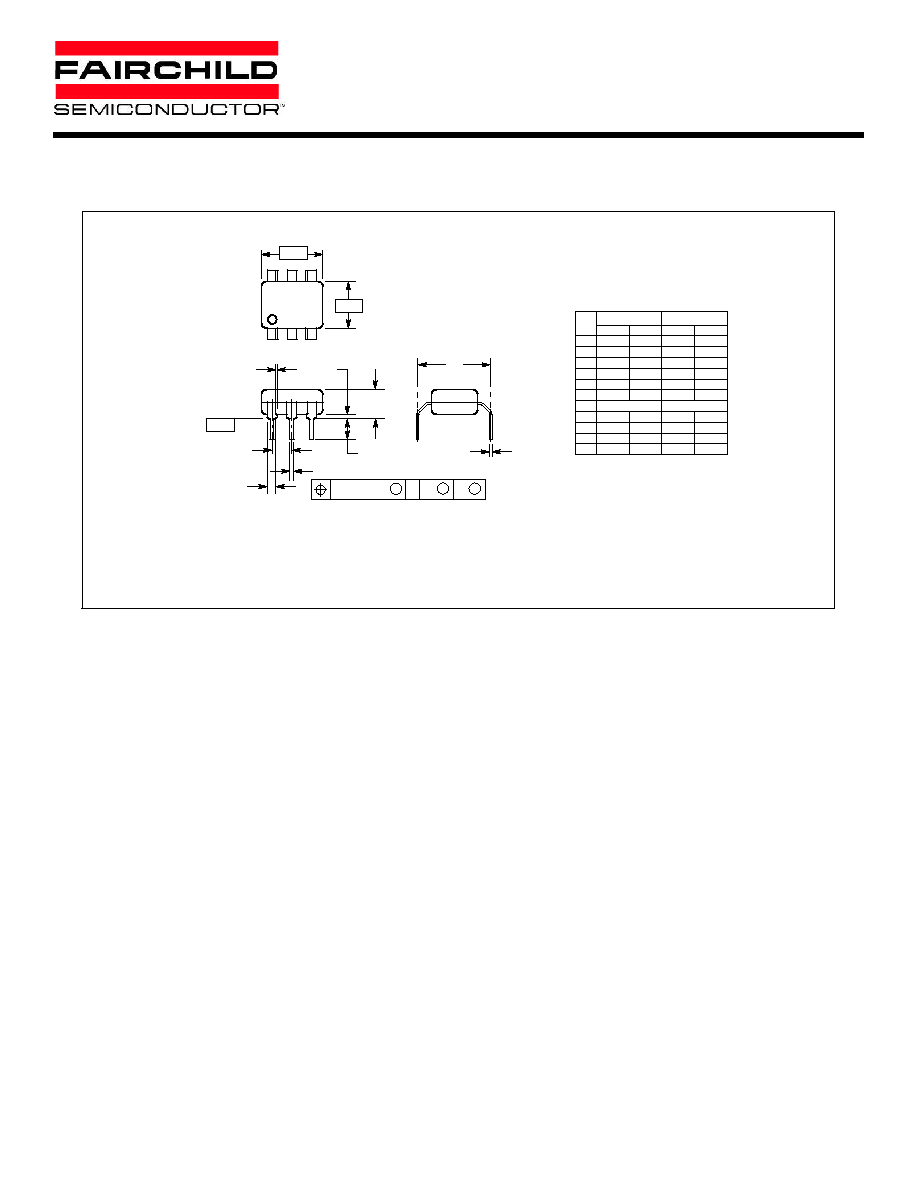
NOTES:
1. DIMENSIONING AND TOLERANCING PER ANSI
Y14.5M, 1982.
2. CONTROLLING DIMENSION: INCH.
3. DIMENSION L TO CENTER OF LEAD WHEN
FORMED PARALLEL.
0.4" LEAD SPACING
6
4
1
3
≠A≠
≠B≠
N
C
K
G
F
4 PL
SEATING
D
6 PL
E
6 PL
PLANE
≠T≠
M
A
M
0.13 (0.005)
B
M
T
L
J
DIM
MIN
MAX
MIN
MAX
MILLIMETERS
INCHES
A
0.320
0.350
8.13
8.89
B
0.240
0.260
6.10
6.60
C
0.115
0.200
2.93
5.08
D
0.016
0.020
0.41
0.50
E
0.040
0.070
1.02
1.77
F
0.010
0.014
0.25
0.36
G
0.100 BSC
2.54 BSC
J
0.008
0.012
0.21
0.30
K
0.100
0.150
2.54
3.81
L
0.400
0.425
10.16
10.80
N
0.015
0.040
0.38
1.02
MOC3021, MOC3022, MOC3023

LIFE SUPPORT POLICY
FAIRCHILD'S PRODUCTS ARE NOT AUTHORIZED FOR USE AS CRITICAL COMPONENTS IN LIFE SUPPORT DEVICES
OR SYSTEMS WITHOUT THE EXPRESS WRITTEN APPROVAL OF THE PRESIDENT OF FAIRCHILD SEMICONDUCTOR
CORPORATION. As used herein:
1. Life support devices or systems are devices or systems
which, (a) are intended for surgical implant into the body,
or (b) support or sustain life, and (c) whose failure to
perform when properly used in accordance with
instructions for use provided in the labeling, can be
reasonably expected to result in a significant injury of the
user.
2. A critical component in any component of a life support
device or system whose failure to perform can be
reasonably expected to cause the failure of the life support
device or system, or to affect its safety or effectiveness.
DISCLAIMER
FAIRCHILD SEMICONDUCTOR RESERVES THE RIGHT TO MAKE CHANGES WITHOUT FURTHER NOTICE TO
ANY PRODUCTS HEREIN TO IMPROVE RELIABILITY, FUNCTION OR DESIGN. FAIRCHILD DOES NOT ASSUME
ANY LIABILITY ARISING OUT OF THE APPLICATION OR USE OF ANY PRODUCT OR CIRCUIT DESCRIBED HEREIN;
NEITHER DOES IT CONVEY ANY LICENSE UNDER ITS PATENT RIGHTS, NOR THE RIGHTS OF OTHERS.
www.fairchildsemi.com
© 2000 Fairchild Semiconductor Corporation






